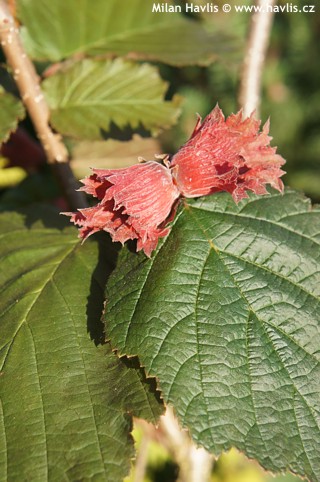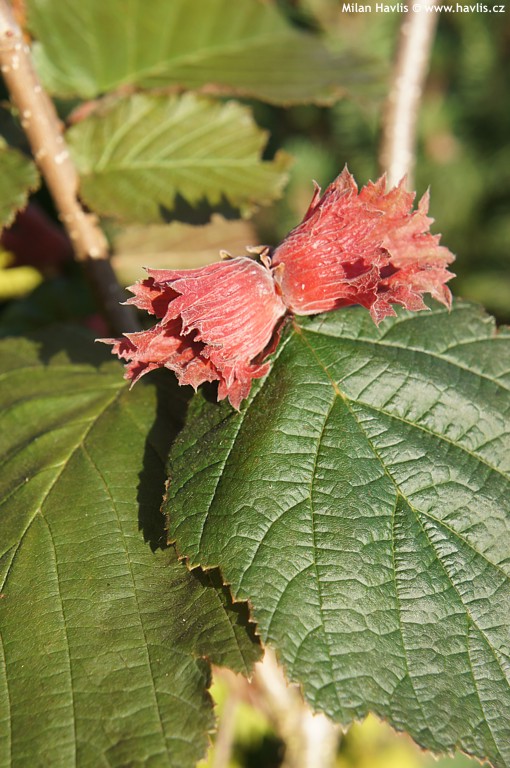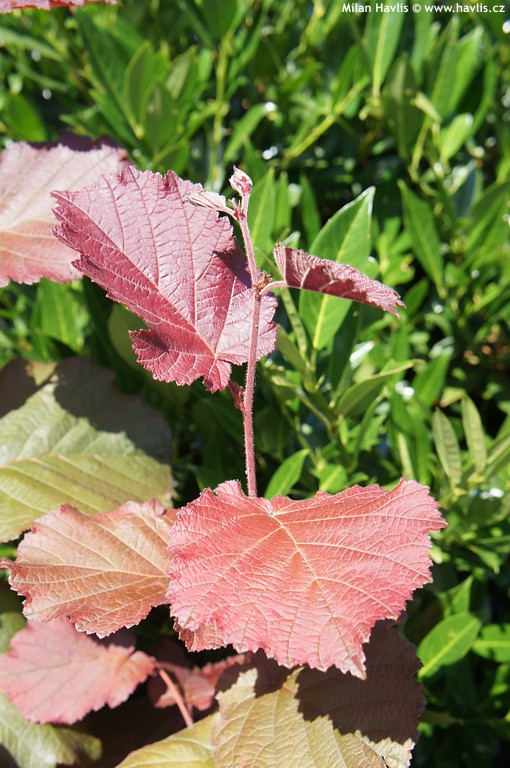Corylus 'RODE ZELLERNOOT' European hazelnut


Rode Zellernoot is a variety with rich burgundy red leaves which turn deep green when nature of if not fully insolated. In winter and early spring in bears plentiful of pendent, rosy red, male catkins. Leaves are broadly heart-shaped, mid green, deciduous, serrated at margins. It can be pruned almost anytime and it takes hard pruning, too. However, if you grow it for fruit, make sure not to cut them much to have some fruit later in the same season.
Hazel nuts are hidden in reddish hard shells. They contain minerals and proteins important for sportsmen, students and convalescents. 100g of fresh nuts contains 13g protein, 61g fat, 13,7g carbohydrates and 3.5g fibre. They mature in late September.
It will grow almost anywhere but will crop best in fertile, well-drained, chalky soil. Fully hardy to -34°C (USDA zone 4), some sources say it can withstand -40°C.
Last update 17-07-2013
Goods are shipped all over Europe. For Russia and U.K. and for further details please read about SHIPPING OPTIONS HERE.
Are you interested in a serious discount for orders NOV-FEB? Check your options here.
THE PRICES INCLUDE VAT of 15%. For quick conversion you can use 1 CZK = approx. 0.04 EUR
- STANDARD QUALITY - Plants of this group are 1st class quality with number of branches and overall density adequate to their size and age, considering they were container grown.
- DE LUXE QUALITY - This label guarantees a luxurious quality of manually selected plants that, compared to their height and age, are exceptionally dense and beautiful.
- EXTRA - These plants are usually mature and bigger specimens with exceptional overall appearance.
- STANDARD (as described in the plant form) means a tree with a trunk of 190-210 cm and a crown at the top, unless specified differently. The commercial size for trees is their girth measured in the height of 1m from ground.
- HOBBY - These plants are of the same quality as our standard-quality plants but younger and therefore cheaper.
- SHRUB - a woody plant with branches growing bushy from the ground level.
- HALF-STANDARD or MINI-STANDARD - a small tree with shorter trunk, its size is usually specified.
- FEATHERED - These are trees with branches growing already from the base of the trunk and up along the stem.
- GRASSES and PERENNIALS - Sizes given usually read the diameter of the pot or the clump, as specified.

















